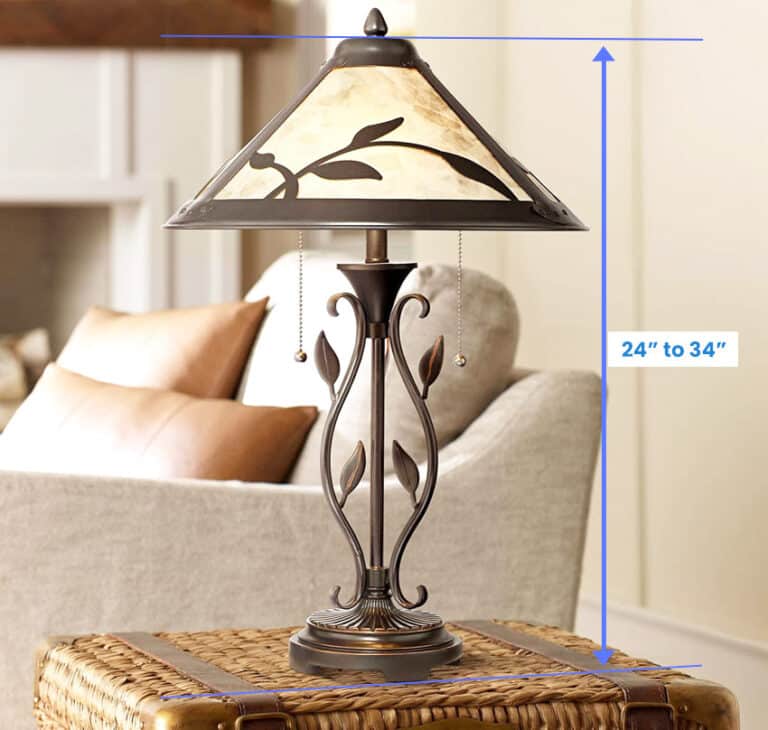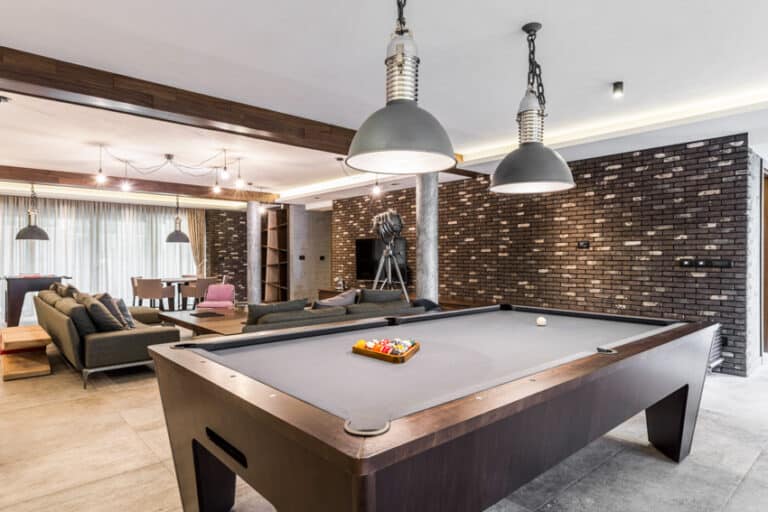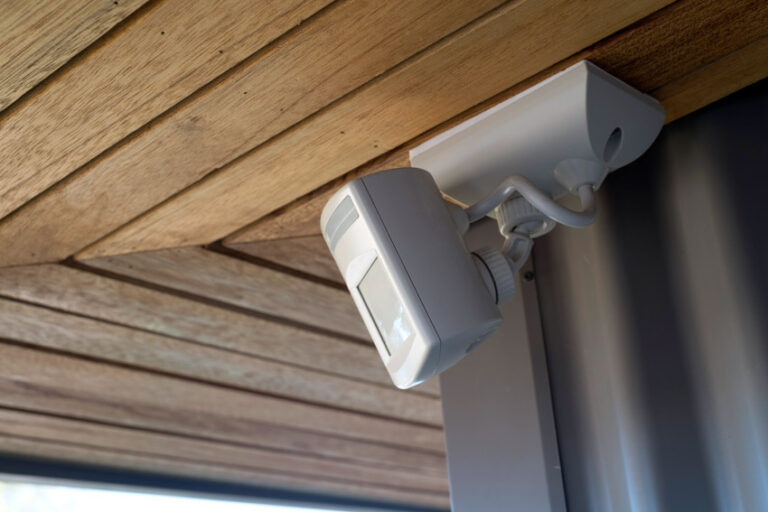Types Of Dimmer Switches (Designs & Controls)
See the types of dimmer switches including what it is, how it works, the different lighting functions, light switch designs, and suitable bulb types.
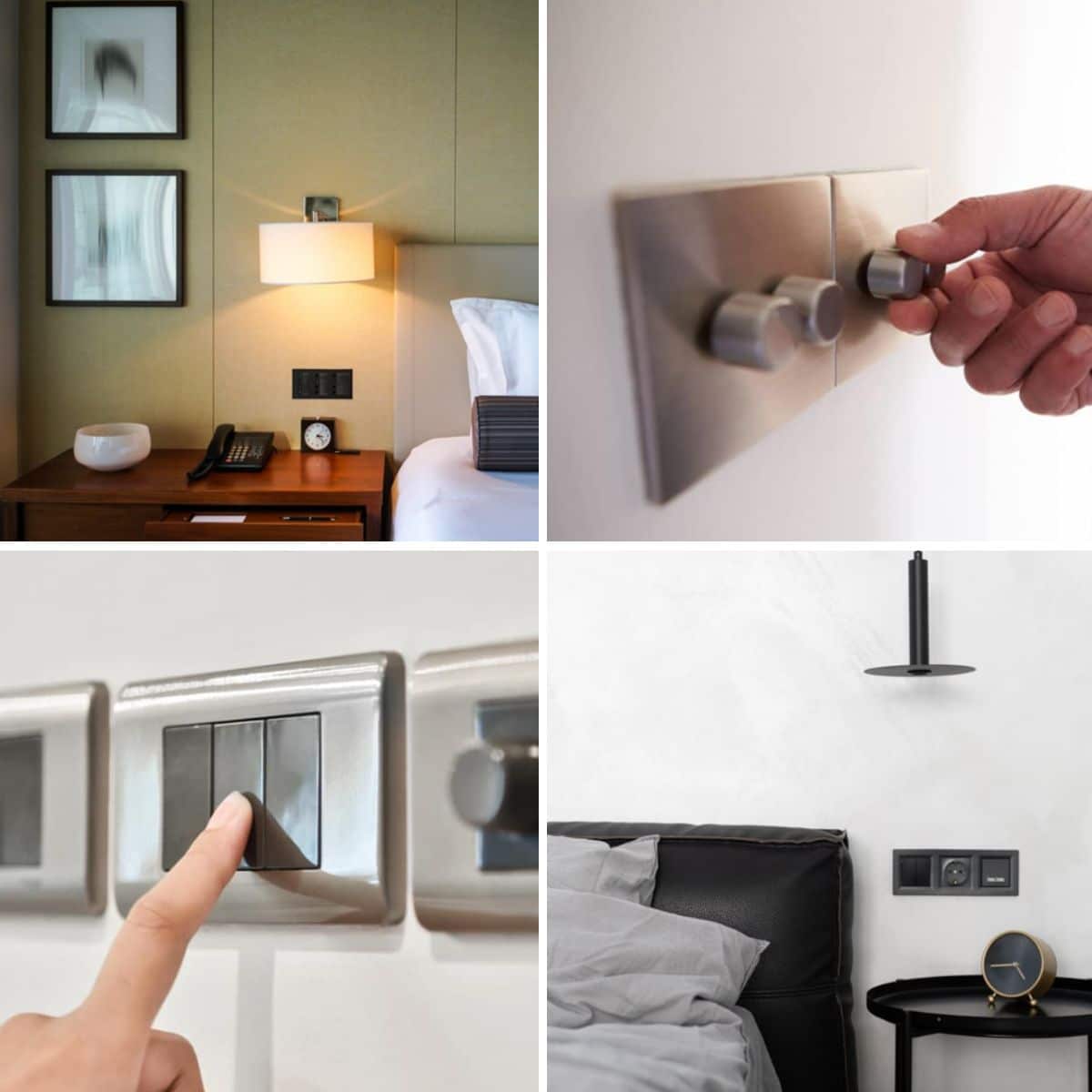
Indeed, these switches can help you cut energy costs, enhance the atmosphere of your house, and save finances on maintenance. Although all they give many of these perks, not all of these units are made the same.
They deviate from the typical. They can be readily adjusted or changed to meet your demands and wants by simply touching or rotating a button or knob.
This electrical device can change the intensity of light that enters your space depending on the situation. Yes, there are different types of dimmer switches. Learning about all of these can assist you in selecting the best one for your needs.
What Is a Dimmer Switch?
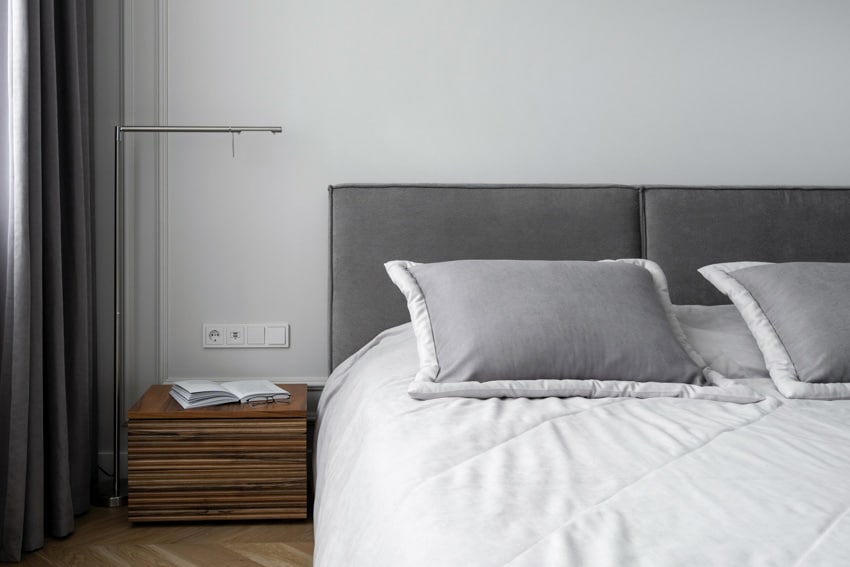
It is also sometimes referred to as ‘mood lighting‘. They are very useful if you wish to have a delightful romantic dinner with your partner, or if the bathroom illumination is too bright during the mornings.
A dimmer switch makes it possible to vary the brightness of a light fixture. Dimmers are often installed in dining rooms, recreation areas, or bedrooms. – Black & Decker The Complete Guide to Wiring, Creative Publishing International and Editors of Creative Publishing
They can be linked to the functionalities of your smart home to customize the ambiance in your house. You can use timers or smart controllers to automatically decrease the lights at a specific time, or you can manually alter the lighting intensity.
How Does a Dimmer Work?
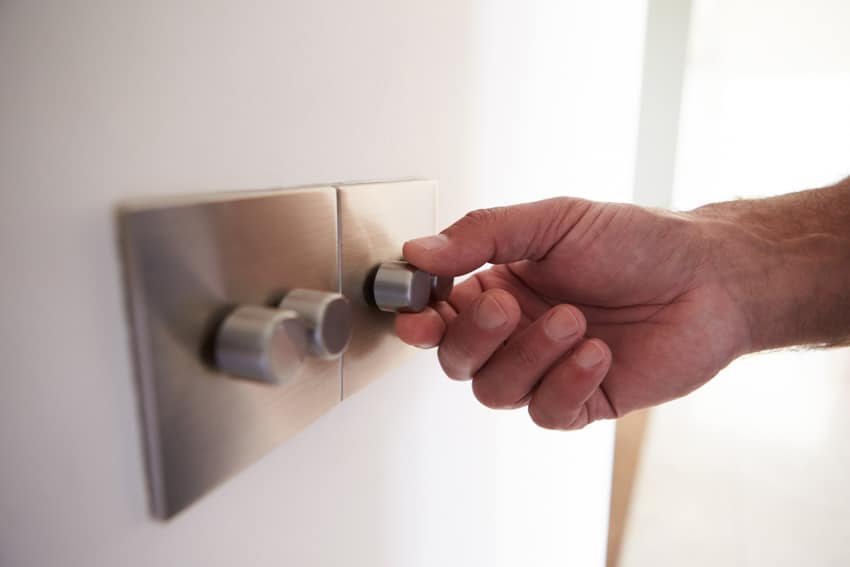
The vast majority of the dimmer switches nowadays use electricity running through a light’s circuitry to turn the light on and off. Whenever this happens, the power from the light bulb gets diverted.
The electrical current that flows through the light fixture is lowered. Remember that the on-and-off energy flow or switching phase is regulated by your home’s alternating current (AC).
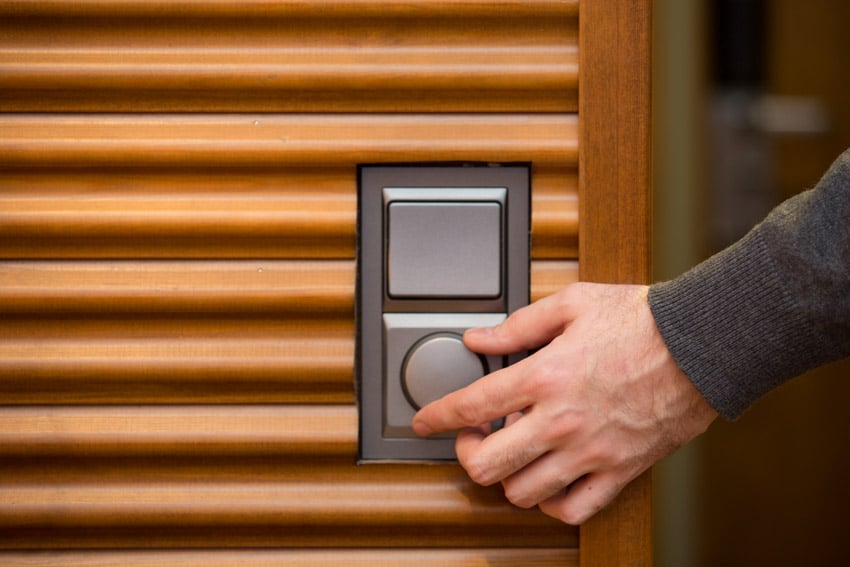
Furthermore, it governs the electrical cycle used to dim light. Whenever the switch is set to the lowest setting, the cycle takes more time to complete and the light generates less light. It shines brighter when switched up since the on-and-off cycle runs more smoothly. It also takes less time to finish the cycle.
Dimmer Functions
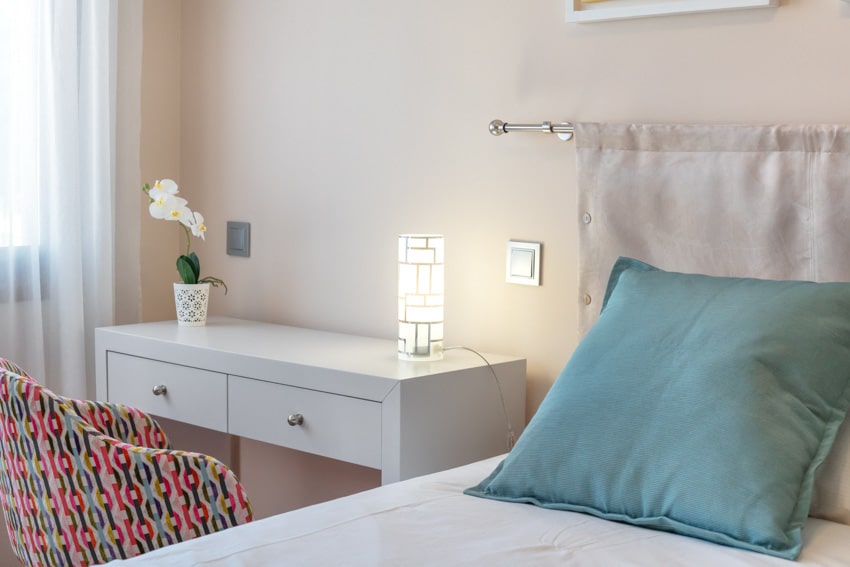
Dimming a single light bulb allows you to save up to 98% of your electricity. You will also notice a significant reduction in your power costs.
The oldest known dimmer switches had merely on and off functions. These switches, however, have become more revolutionary in terms of features, design, and appearance as technology has advanced. Furthermore, they are far more energy-efficient than standard electrical switches.
Efficiently Controls Your Lighting System: They come in a variety of styles that are all incredibly user-friendly.
They are best controlled by sliding up and down a lever, as aforementioned. A knob is sometimes employed to integrate a much easier mechanism.
Additionally, dimmer switches are now equipped with remote control methods, making them even more user-friendly. A tiny button, for instance, will allow you to brighten or reduce your lighting with a touch.
The capability to create the environment of your preference is one of the key functions of dimmer switches. They can be used to modify the illumination in your living room, bathroom, bedroom, kitchen, and dining spaces.
Provides Your Home With Mood Lighting Functions: With the installation of these switches, you may easily modify the mood of your home. For example, soft lights can be utilized for gatherings and film screenings.
Meanwhile, they can be applied to intensify your artificial types of lighting fixtures for work and study purposes. Rather than purchasing a range of electric lighting, you can improve the functionality of your area by using a few basic yet efficient dimmer switches.
Prolongs The Lifespan Of Your Lighting Sources: They switches can help you prolong the lifespan of your electric light bulbs.
They have the capability of decreasing the length of their highest energy level, therefore improving the lifespan of different light sources. They serve an important role in boosting the flexibility of electric supply in electric lighting and chandeliers.
Dimmer Controls
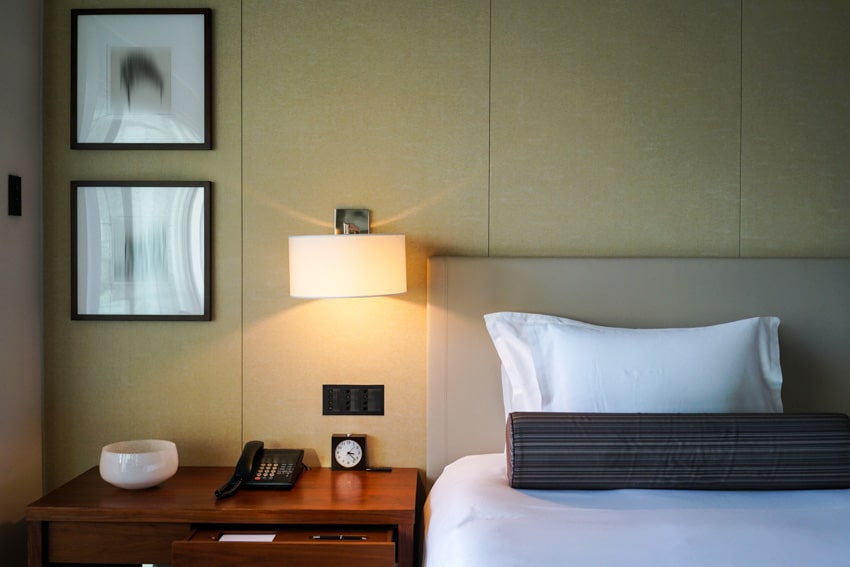
Rotary Dimmers
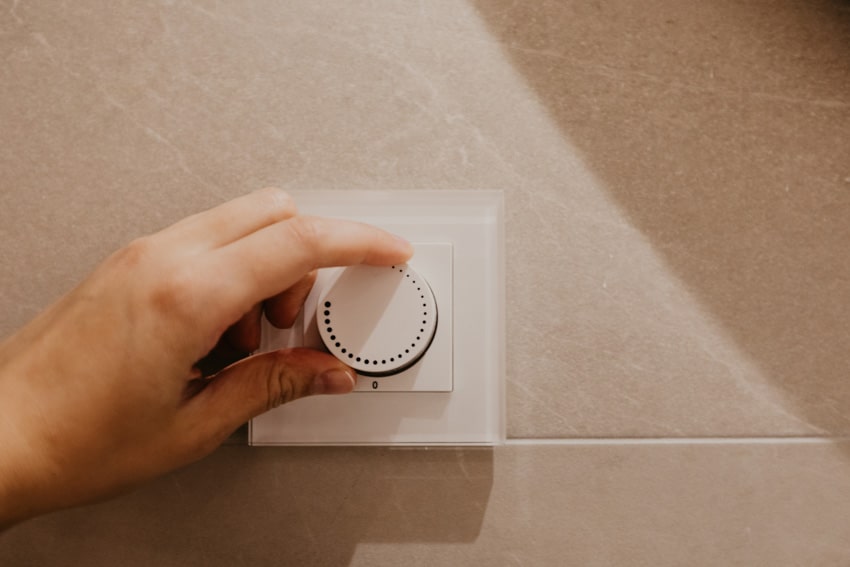
The blades completely block all illumination when they are arranged parallel to one another. As they are repositioned into a perpendicular configuration, more and more light flows through until all of the blades are coordinated and the light returns to its ideal brightness.
This type is commonly found in theaters or entertainment venues where lighting levels must be changed fast or progressively during concerts or presentations with a rotating knob.
Toggle Dimmers
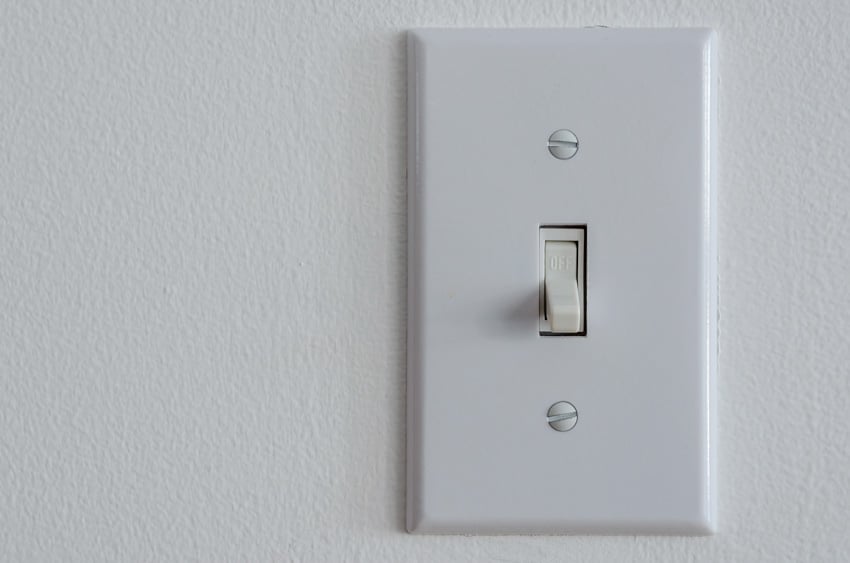
Slide Dimmers
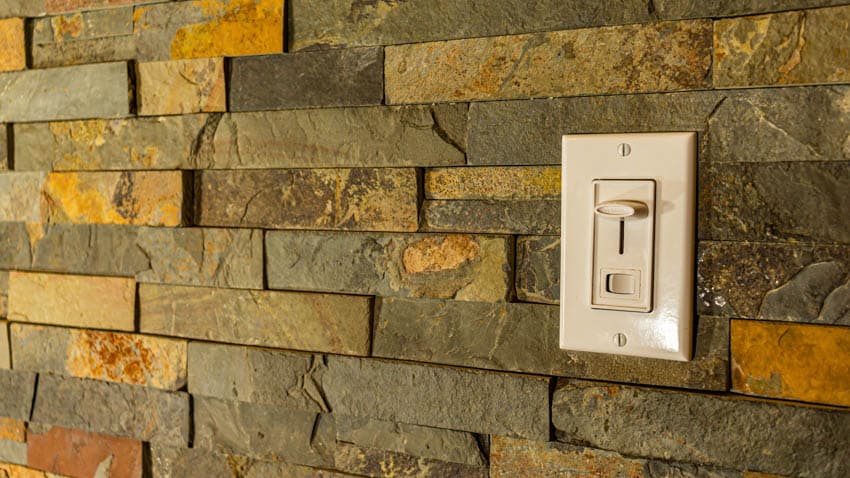
Generally speaking, slides without a switch are less expensive than other options. Certain slides may additionally include a button that mechanically slides the unit back and forth to reduce or increase brightness.
Slide Dimmers With Preset Switches
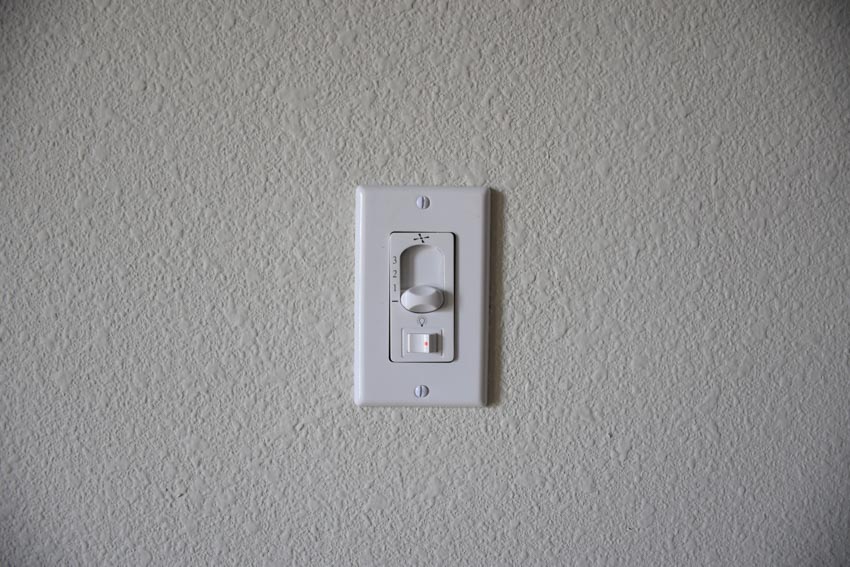
Button Dimmers
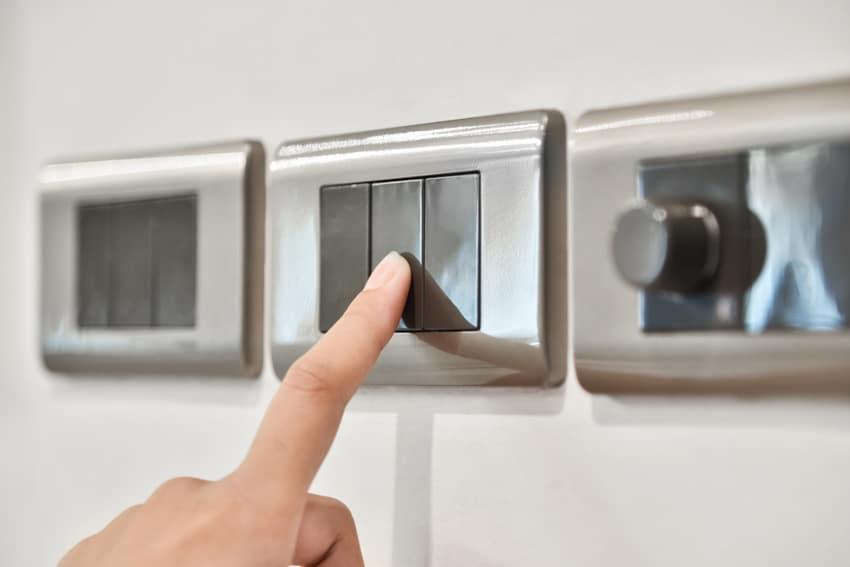
Button controllers have a simple touchpad or button that allows the individual to preset their light intensity. It is one of the most sophisticated switches that smart homes are continuously looking for.
Rotary Push Button Dimmers
Rotary push button dimmers are a type of single pole switch with a round knob that are easy to operate. You can turn on or off the lights by tapping the button, or turn the level of brightness with the toggle.
These types of dimming switches do not work with some types of low voltage light fixtures that generally don’t work with these switches. It’s advisable to test the function with a fixture or search the manufacturer for more information.
In addition, it’s recommended that one use an 8w or higher bulb to prevent flickering. Some LED bulbs may be turned down to about 20% power before they completely turn off.
Rocker Dimmers
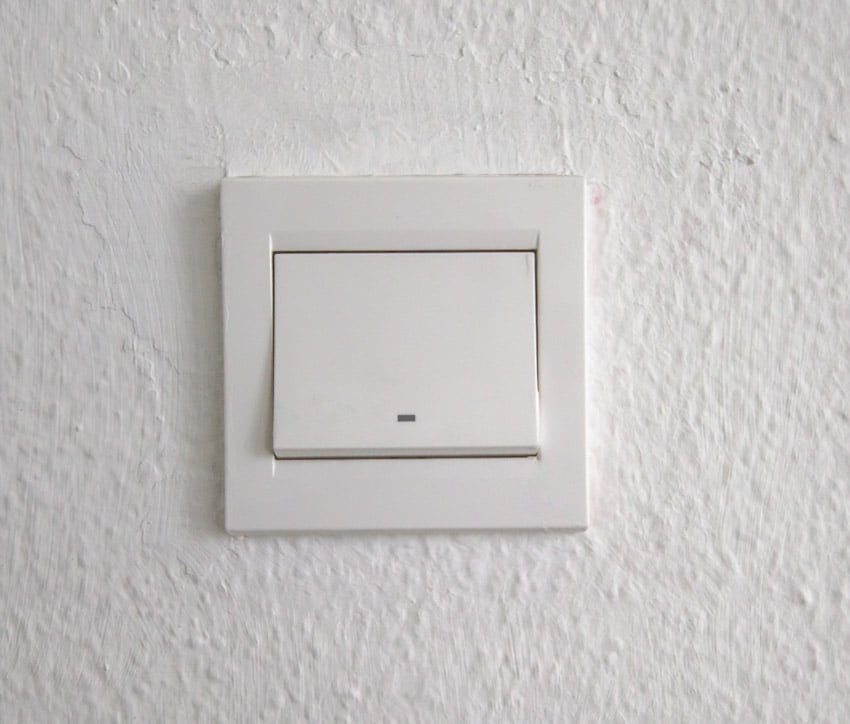
It has a flat layout that rests practically flush against the wall surface and ‘rocks’ back and forth to switch on and off the lighting fixtures.
Rockers are another common choice for indoor lighting. These are appropriate for house lighting solutions as well as for individuals who want to keep the lights running all of the time at a suitable level. It lets you customize the illumination in any room to suit your needs.
Types of Dimmers for Light Switches
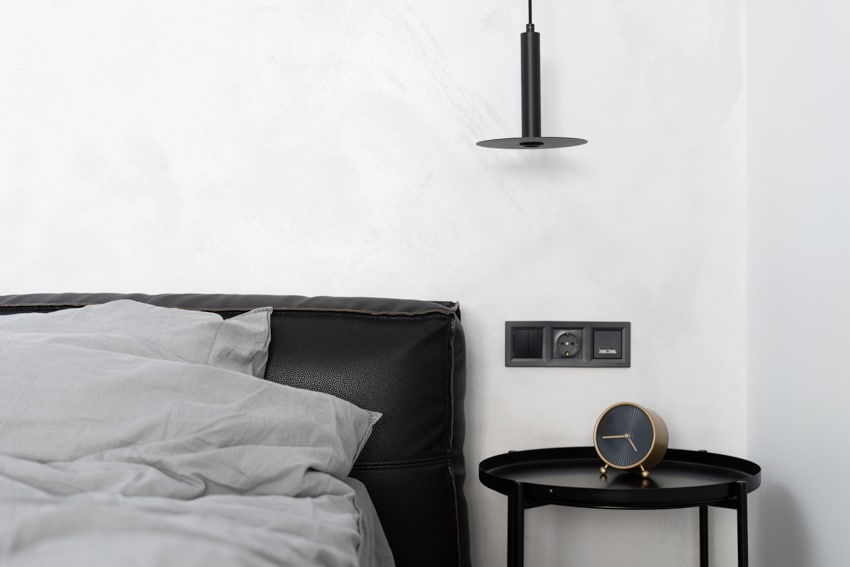
Resistive Dimmers
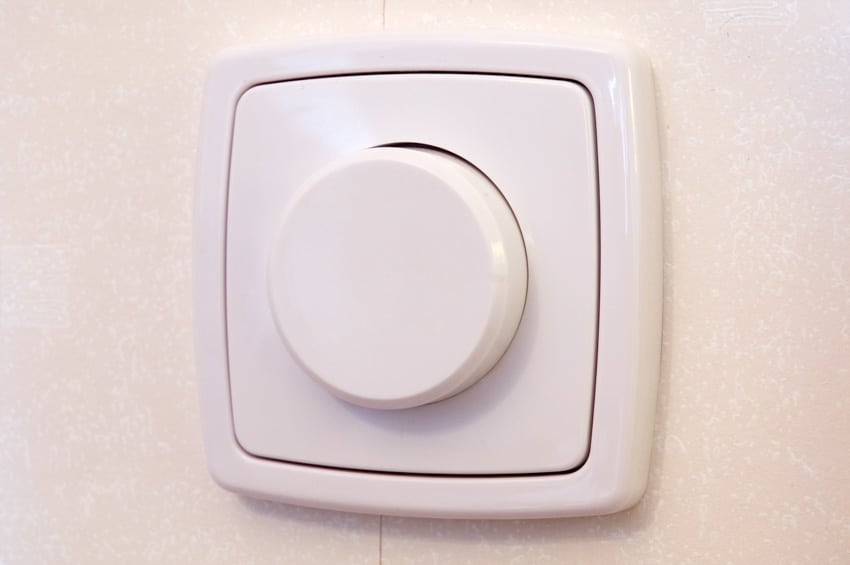
These are divided into two groups and are intended for filament light sources. There are two types of resistive dimmers: leading-edge and trailing-edge types.
Leading Edge Dimmers: Leading-edge switches are commonly utilized for incandescent and halogen light bulbs. These are less expensive and have a higher wattage since they employ the TRIAC (Triode for Alternating Current) switch to regulate the power of the light fixtures.
Trailing Edge Dimmers: They start easily and softly, which means they turn on at a low level and allow you to raise them as needed. The trailing edge also enables multi-way dimming, which implies you can darken the light from different spots.
However, trailing edge regulators are more pricey and difficult to find. The increased price tag is related to their enhanced functionality.
LED Dimmer
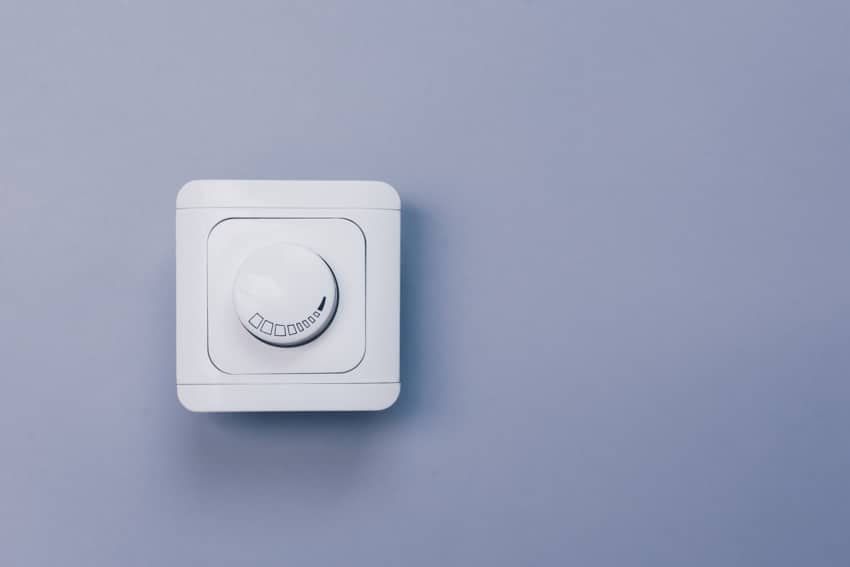
Single Pole Dimmers
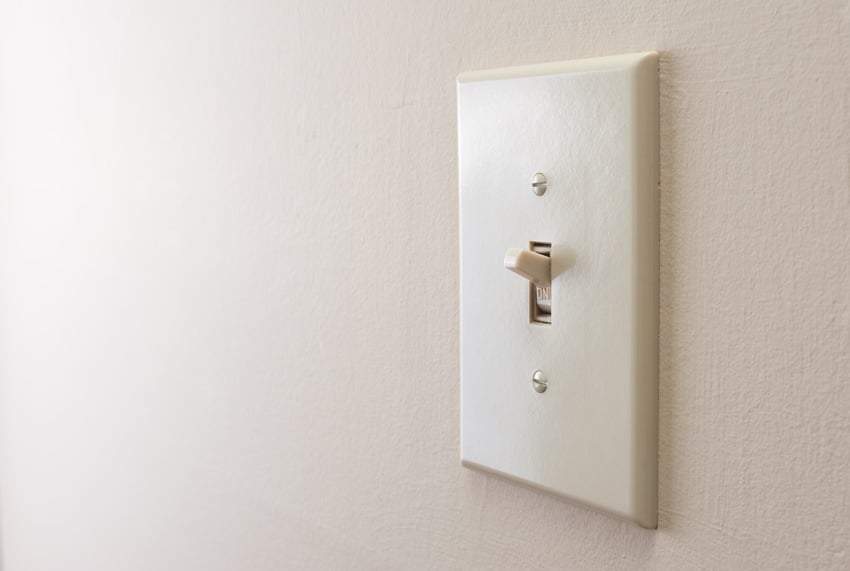
Most of these feature a grounding screw that links to the ground wire of the circuitry. This type is ideal for compact rooms with limited light sources.
Double Switch
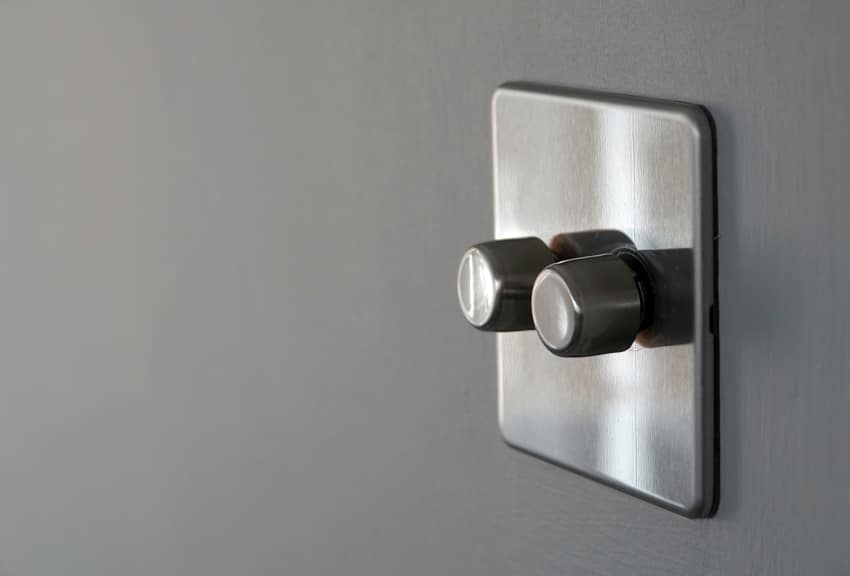
A double-pole type is more difficult to wire than a single-pole switch, but they are better for easily controlling and providing diverse intensities of lighting in any space.
3 Way Switch
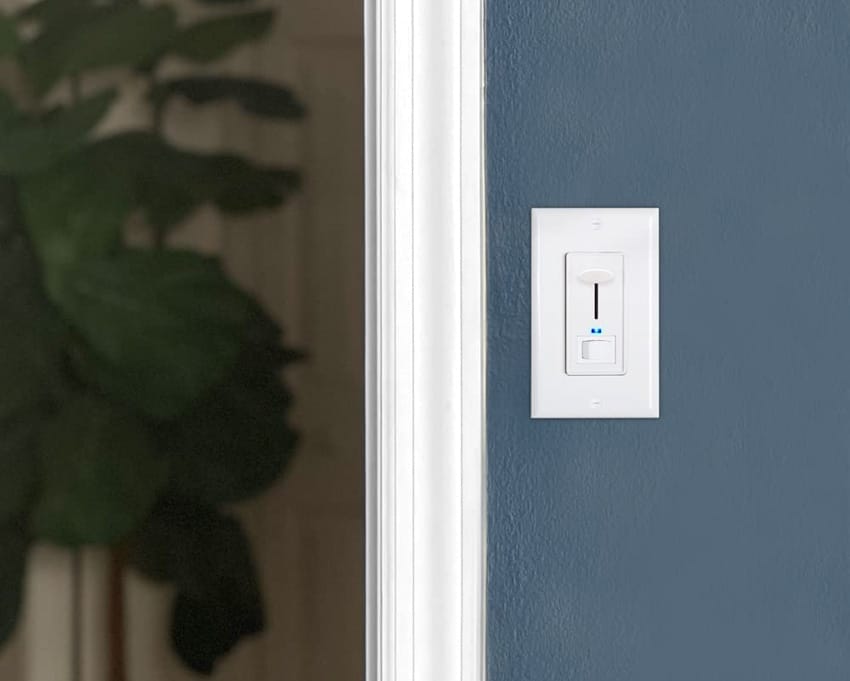
A 3-way dimmer light switch is recommended if you want to be able to turn on a single dimming light fixture from two distinct locations.
These switches are perfect for extensive corridors or stairs where you would like to control the brightness from either side or large rooms with different seating spaces.
4 Way Switch
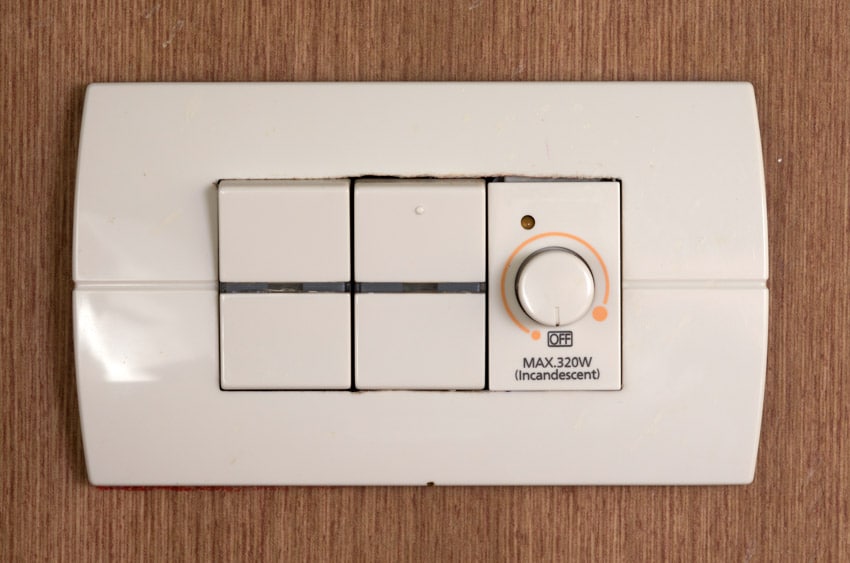
This allows the user to turn on or off a light and control its brightness from three or even more separate spots. A 4-way switch’s circuitry is far more intricate than that of a double-pole switch.
Multi-Location Switch
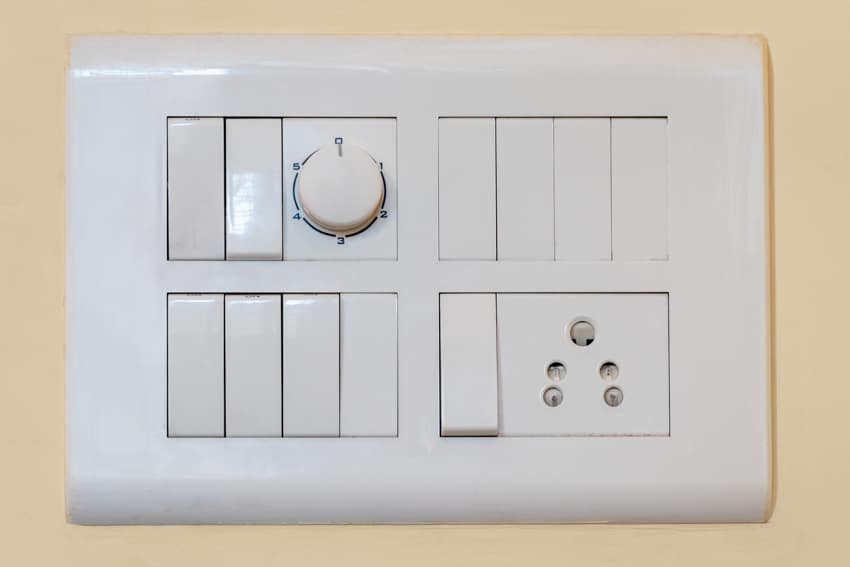
Multi-location switches can also be used in conjunction with another compatible switch, standard 3-way switches, or any smart home lighting system.
Smart Switch
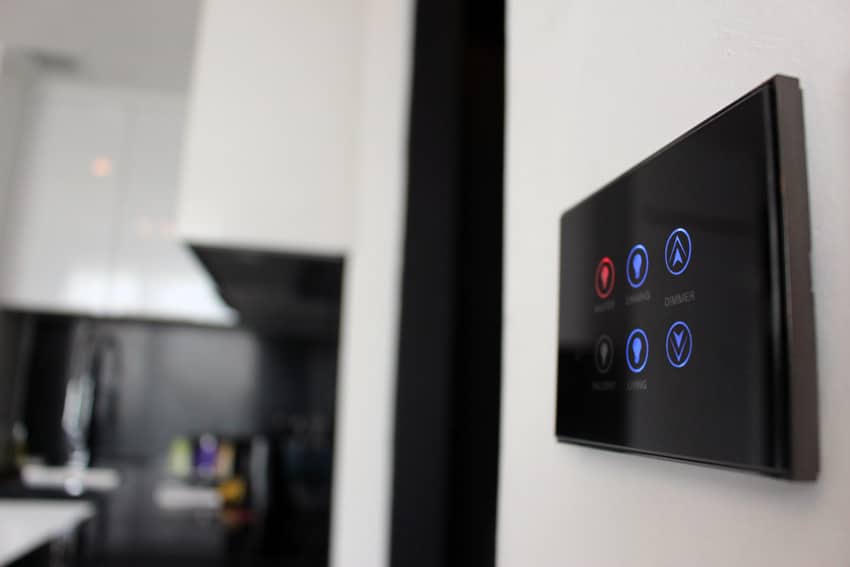
These switches may be operated wirelessly via Bluetooth or WiFi, enabling you to operate or configure your lights directly from your device.
You may either manually adjust them on your device or configure the settings to have your lights adjust automatically. They can help households save money by intelligently generating or dimming light whenever and wherever it is needed.
Plug-In Dimmers
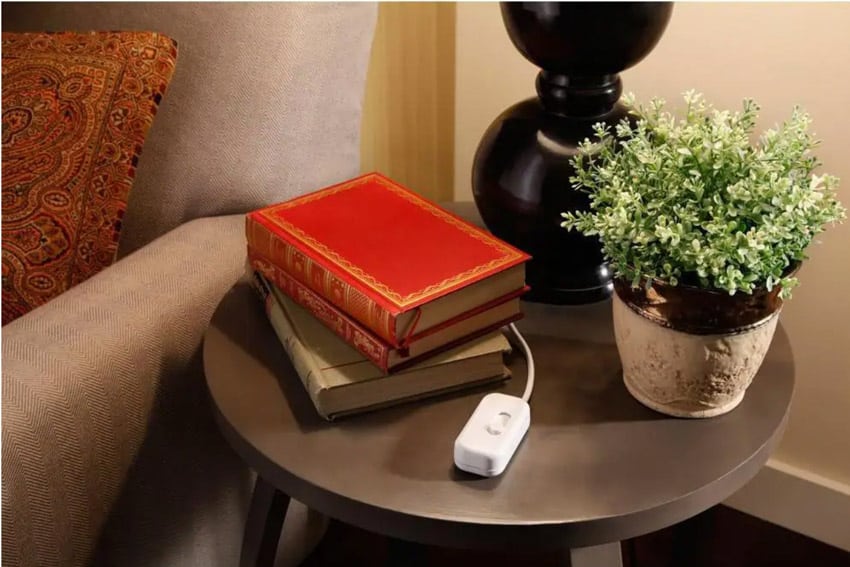
Plug-in dimmers convert existing lamps into dimmable light fixtures. These are ideal for tabletop and floor lights and are meant to be easily reachable in the dark. All you need to do is connect it between the light fixture as well as the wall outlet, position the controller in a convenient location, and use it as needed.
In addition, they provide an inexpensive alternative to installing dimmable lights in homes, which not everybody desires or can afford. Many individuals choose plug-in’s for table lamps or nightstand lights.
Moreover, plug-in controllers often have a switch that looks like a slide type. Plug-in’s are inexpensive and simple to use, and they can save you money on wiring and configuring lighting fixtures.
Inductive Dimmers
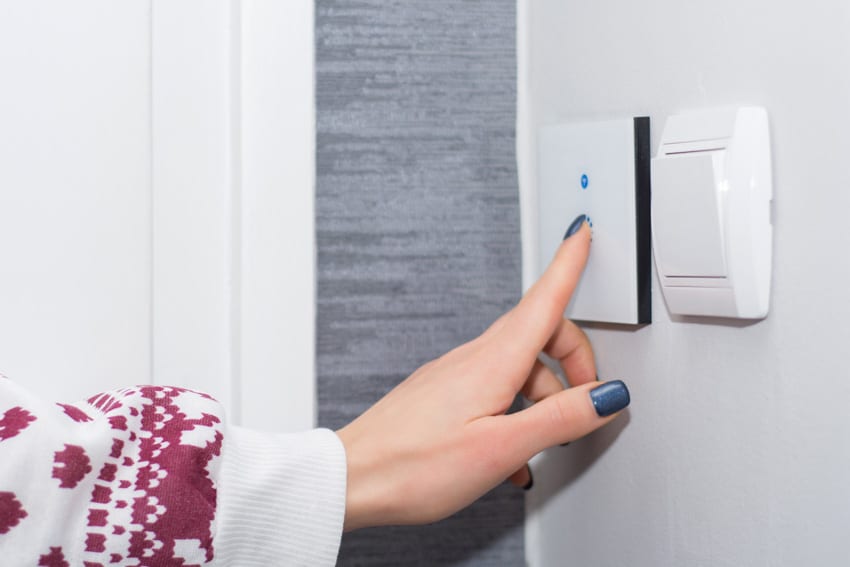
Plus, they are measured by VA (voltage amps) rather than watts. These types can withstand a significant surge of current from a transformer.
What Types of Bulbs Do Dimmers Use?
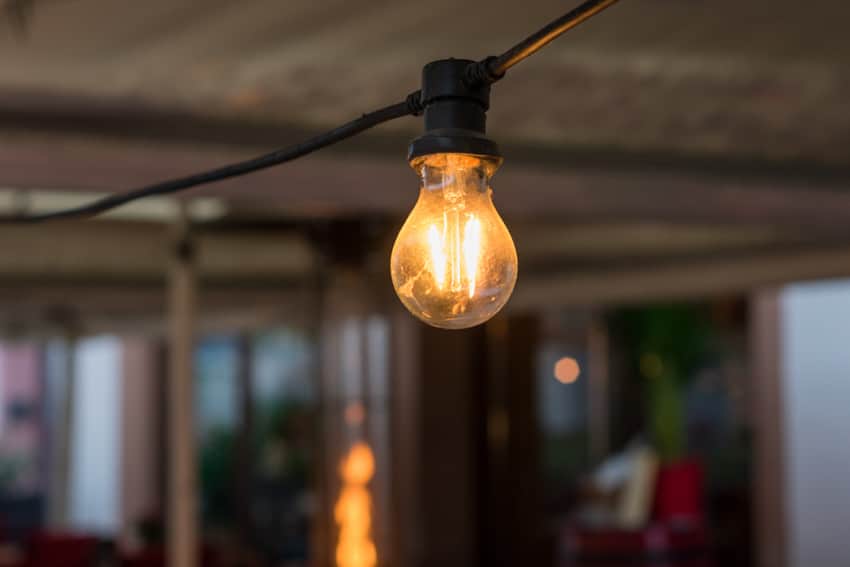
Incandescent Bulbs: Incandescent bulbs are among the most versatile bulbs available, and they operate with every type of control that you can find in the marketplace. Electric currents flow through a wiring filament within an incandescent bulb, causing the filament and thus the bulb to illuminate.
Such bulbs, meanwhile, might burn out if the power is too high. Hence, dimmable lighting is one approach to save energy and extend the life of an incandescent bulb. Because they function properly with all of these switches, incandescent light bulbs are considered dimmer-friendly lights.
Unfortunately, according to multiple sources, incandescent light bulbs have been phased out in the vast majority of countries since 2009 in order to save energy and counteract global warming. As a result, you may no longer be able to employ incandescent bulbs with your dimmer nowadays.
Halogen Bulbs: Halogen lamps that can be dimmed are common in older homes. These bulbs can be dimmed by incorporating changeable resistance between the power load and the electricity source.
Halogen bulbs are nearly identical to incandescent bulbs in that they both create illumination whenever a tungsten filament is adequately heated to produce illumination or incandescence, with the only difference being the structure of the glass envelope and the gas contained within the envelope.
Additionally, halogen lamps are totally dimmable and ideal for bright daylight. Nevertheless, depending on how frequently you turn it on and off, it only lasts approximately 1000 to 2000 hours.
CFL Bulbs: CFL bulbs, or compact fluorescent lights, are not recommended for use with these switches, according to some sources. When utilizing a CFL, adjusting the control to a lower voltage fully turns it off. However, if they include a dimmable ballast, certain CFL bulbs would become compatible with these switches.
You can try to find the indicator that is generally on the packing of the CFL bulb to see if it is capable of interacting with a dimmer. When purchasing a CFL, you can also contact the supplier for directions and other necessary details.
The technology of CFL has advanced over time. In reality, the most recent dimmable CFL may be dimmed from 100% to 2% of its light intensity. Newer CFLs not only function well with these switches, but they also live longer than standard incandescent light bulbs, which are fantastic possibilities for saving money and energy.
Electronic Low Frequent Bulbs: Electronic low-frequent bulbs, more known as electronic low-voltage (ELV) bulbs, use more energy-saving properties. ELV bulbs are perfect for LED technology, making this type the ideal choice in many circumstances.
ELV switches are frequently used in conjunction with LED bulbs as they have a proven service record of boosting a light bulb’s capacity to save energy while offering luminosity in a practical and sustainable manner.
Many electronic low-frequent bulbs have already undergone significant advancements, making it possible to choose an energy-efficient LED replacement that will operate with your dimming technology. Many LEDs are now dimmable, and the majority of them have a projected lifespan of 20,000 to 25,000 hours.
One other advantage of the ELV dimmable light bulb is that it will not be affected by a massive voltage influx, which would allow in too much current too soon. Furthermore, there is no buzzing sound connected with dimming, indicating that most ELV types are visually attractive.
Magnetic Low Frequency: Magnetic low-frequency lighting sources, also known as magnetic low-voltage (MLV) bulbs, are ideal for recessed lighting and regulating MLV circuits.
MLV lights are typically bigger and heavier than ELV lights. The dimmable bulbs in a magnetic low-frequency lighting system are powered by a magnetic transformer.
Can You Put a Dimmer on Any Light?
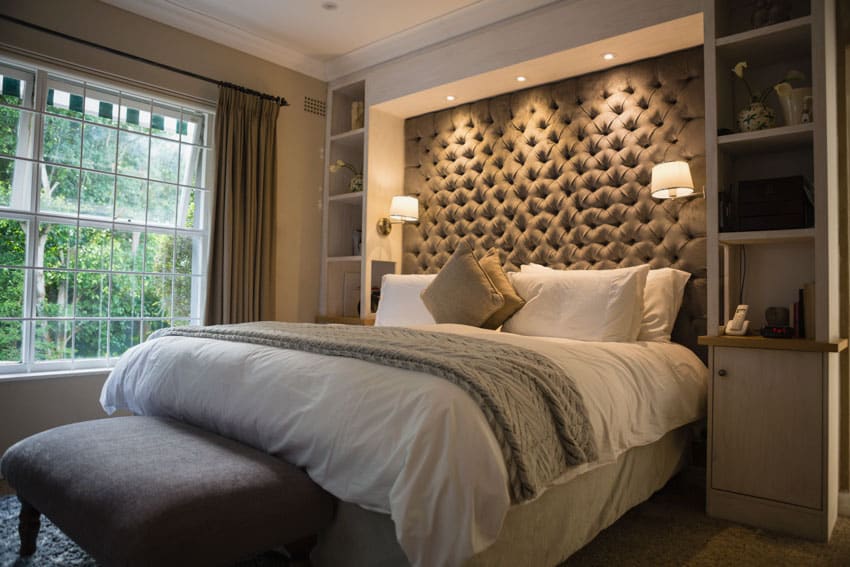
However, wherever there is an on or off switch already in place, a switch to dim can be incorporated. If you replace the existing toggle switch with a dimmer, you will be able to modify the brightness of the lighting fixtures as long as you use a light bulb that is compatible with the dimmer you have purchased.
When putting a standard dimmer in your home, evaluating your usage will assist in avoiding any compatibility problems later on. You can look at the various types of light switches mentioned above to determine which one will work with your current lighting source.
For example, depending on whatever dimmer you choose, you can examine how it will connect with smart lighting. A traditional controller will not effectively dim most smart lighting models.
Smart switches are available that connect to your home’s wifi to allow you to control the fixtures from your smartphone app or home assistant.
Hence, smart options would be the ideal option to ensure that they will be working with smart lights because they operate harmoniously and do not cause any electrical issues.
Best Dimmer for LED Recessed Lights
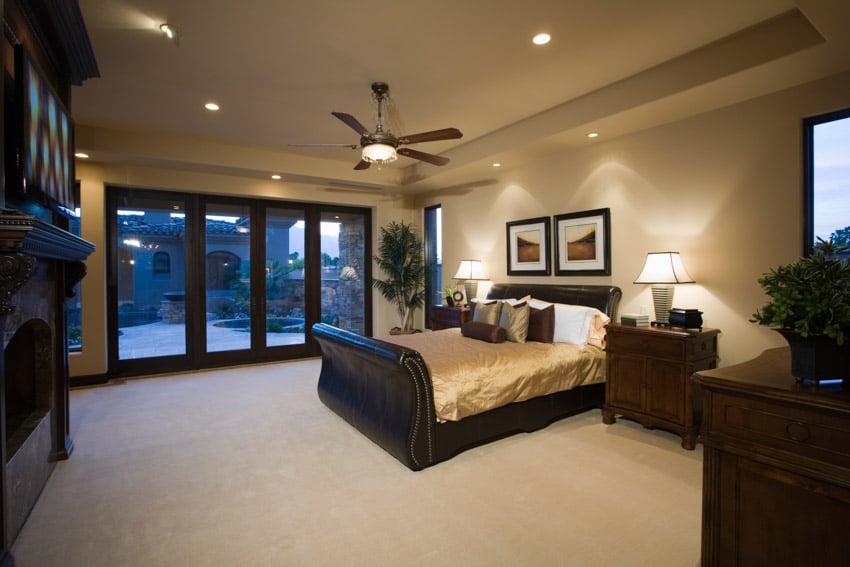
Slide with Preset Switch: Slides with a preset switch are the most widely used type of for LED recessed lighting. They have an on/off switch that can either be vertical or horizontal as well as a lever that glides up and down to control the intensity of the lights.
It’s easy to use: all you have to do is lift the slider to brighten the lights and lower it to dim the recessed lights. Furthermore, it’s extremely durable.
Slide without a Preset Switch: You can simply slide the handle up to the desired brightness level to turn on your LED recessed lights. To switch off the lights, you can just pull the lever downward. Slide’s with no preset switch are extremely simple to use.
They are often less expensive than other controllers. It is indeed a decent choice if you like to change the brightness of your LED recessed lights every time you switch them on.
Toggle: Toggles are normally basic-looking, with a huge rectangle-shaped button that you tap to switch on or off the lights. It includes a toggle or buttons to alter the brightness. The majority of these include LED indicators that show the illumination brightness.
Electronic toggle types, unlike traditional types, can be put at both control terminals in a 3-way circuit. This is particularly handy for controlling LED recessed lighting above stairs where you would like to be able to regulate the lighting brightness from both the top and bottom of your stairs.
Smart: Smart switches have incorporated wireless capabilities, hence they are ideal for controlling LED recessed lights smartly using your device. They can do everything from basic dimming to complex settings and automation management. Smart controllers are typically configured and programmed via a device. application.
Most types of switches are designed to work with standard electric wall box openings. they often come with wall plates that can line up with existing wiring.
Can You Use a Dimmer with Fluorescent Lights?
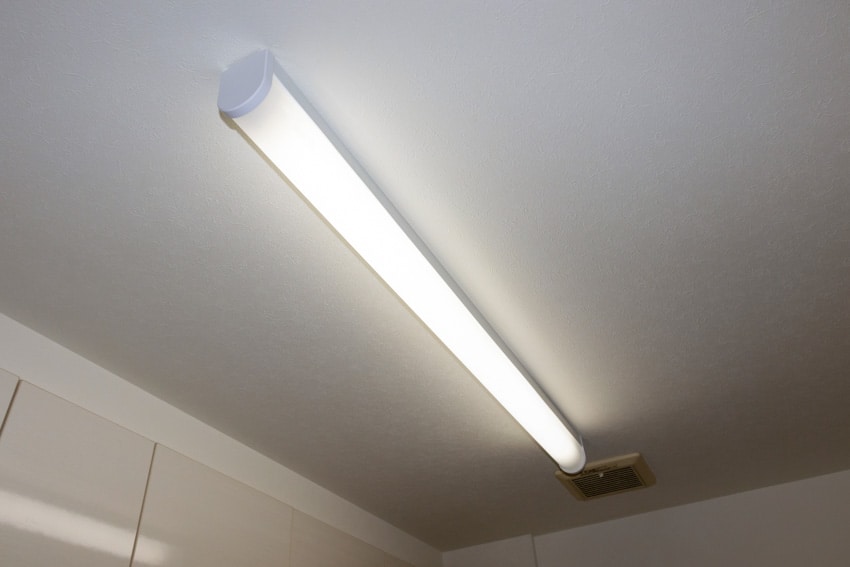
There is a wide range of fluorescent dimming ballasts and controls available on the market to accommodate their entire fluorescent dimming solutions. These are most commonly employed in business or institutional settings.
Fluorescent lighting sources, on the other hand, are increasingly being employed in residential settings, particularly in recessed downlighting and ceiling lights wherever energy efficiency is a priority.
Although incandescent bulbs dim to give a warm, candlelit effect, the illumination from a fluorescent bulb remains colder in color and does not always match the tint of a brightly lit CFL bulb.
Dimming a fluorescent light, unlike an incandescent bulb, will not extend its lifespan. What it will merely accomplish is to help create a mood in a space.
Can You Use a Dimmer on a Ceiling Fan?
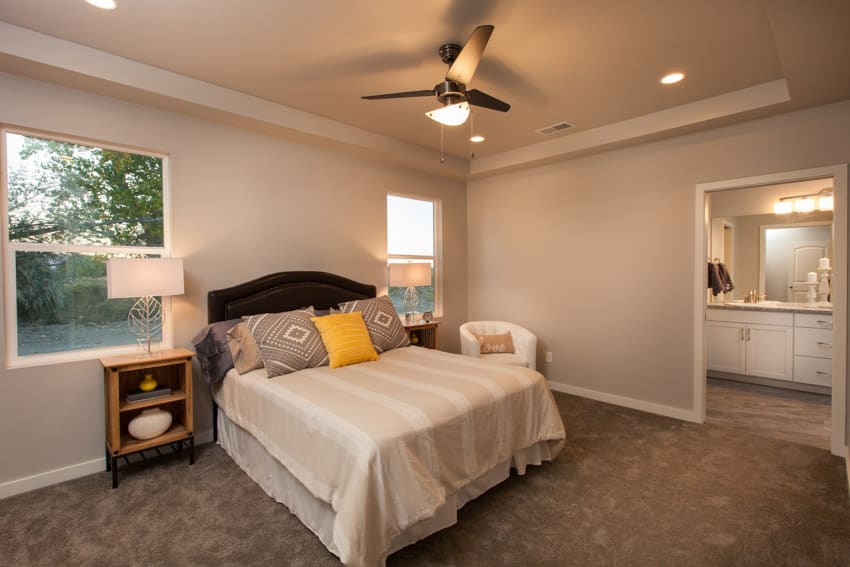
They may also cause damage to the ceiling fan motors. To circumvent these problems, you can use a switch that is made exclusively for most types of ceiling fans.
Using the incorrect switch for a ceiling fan might cause serious effects, thus if this is a DIY job, you have to exercise caution. A switch can be employed to control the speed of a ceiling fan as well as turn it on and off.
In principle, any switch that can dim provides these capabilities, but using the wrong type of type for your fan can pose complications.
The majority of switches are primarily designed to control lighting fixtures. As a result, they might overload your ceiling fan’s power connection, causing permanent damage to the ceiling fan’s motor. It can trigger a mild explosion and fire in your house in extreme circumstances, leaving your family, pets, and valuables in jeopardy.
Although utilizing a switch to adjust the speed of your ceiling fan is practical, it is simply not worth the risk. If you attached your ceiling fan to any controller before reviewing this post, it would be wise to disconnect it first and verify the switch to determine whether it is suitable to be used with ceiling fans.
If your house is equipped with these switches, it is most probably just a standard controller. These are the most prevalent types of dimmer switches and are designed to regulate solely light fixtures. If you only use them to control your lights, chances are this type of switch is not suitable for the operation of ceiling fans.
If you have recently gone into a new house or own a switch that is not currently being used to control lights, you might be unsure whether it is geared for lights or ceiling fans. Luckily, identifying your type of switch is quick and simple.
To begin, unscrew the wall plate with a screwdriver. Afterward, check for a description of what type of dimmer it is. It is normally printed in small text on the right corner of the switch plate. It will normally indicate the labels “fan only”, “fan speed controller”, or “incandescent lights only”.
Do Dimmer-Style Switches Save Electricity?
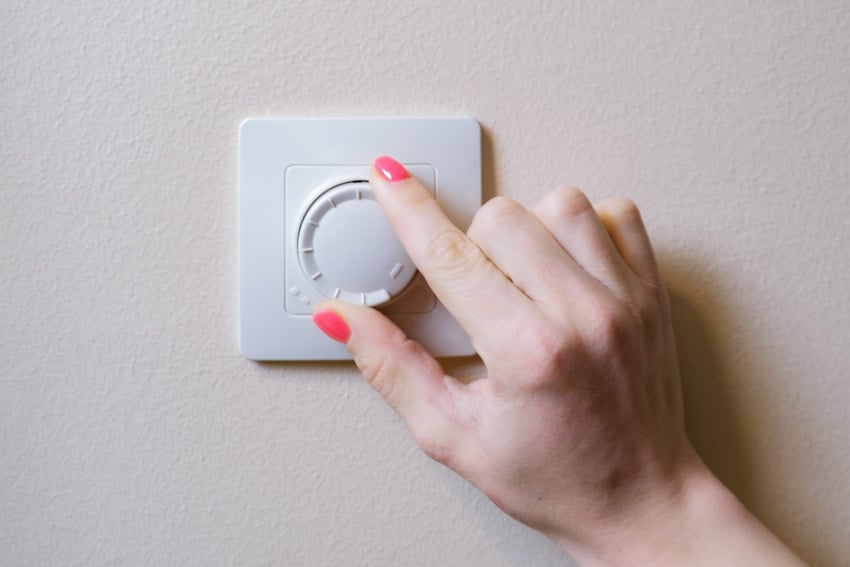
Dimmers often employ a TRIAC (Triode for Alternating Current) switch to quickly switch on and off a lighting circuit to minimize the amount of energy passing to a light bulb. This connection will cut the power to the fixture up to 120 times per second. The naked eye will interpret this as a continual flow of light but it is actually an extremely quick flickering.
In addition, significant adjustments have been applied to the modern switch. These switches commercially available nowadays merely send the energy required to activate the lights.
This implies that if the lights are dimmed, the switch will only transmit significantly less energy than if the lights are switched on more brightly. Essentially, the lower the brightness of the lights in the area, the less energy is consumed!
Electricity companies charge depending on the amount of energy used each month. They minimize energy use, so installing one can help householders conserve money and electricity. Your monthly utility expenses will be cheaper if you use less electricity to operate your lighting system.
See more related content in our article about the types of light switch cover dimensions on this page.

